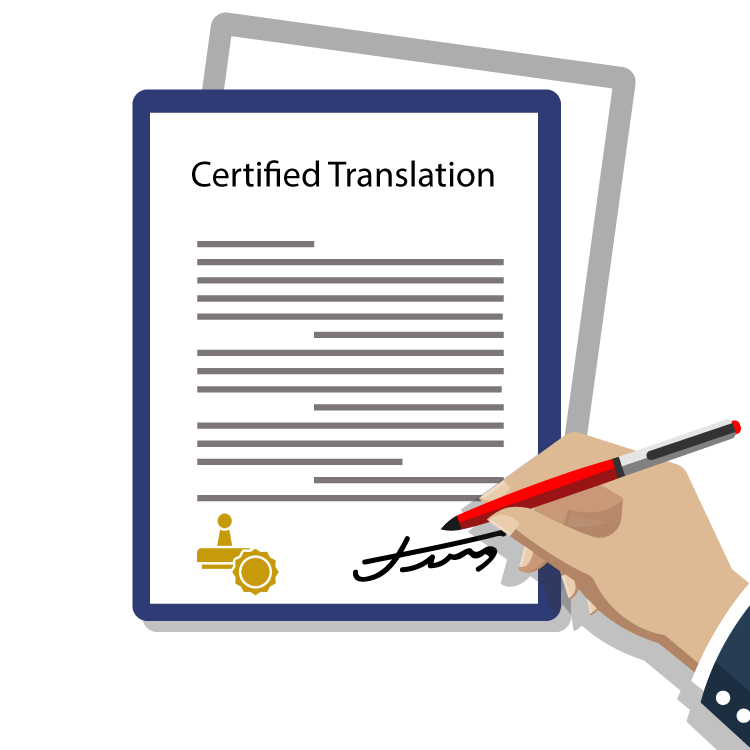
In today’s global world, crossing borders has become a regular part of life, whether it’s for business, education, immigration, or legal matters. But as opportunities expand across countries, so does the need to understand and be understood in other languages. That’s where certified translation services come in.
If you’ve ever been told you need a “certified translation” for your documents and wondered what that means—or why it’s different from a regular translation—you’re in the right place. Let’s explore this topic in an easy-to-understand way that helps you make smart decisions when accuracy matters.
What Is a Certified Translation?
A certified translation is not just any translation. It comes with a formal statement—usually signed by the translator or a language agency—confirming that the translation is complete, accurate, and true to the original document.
This certification is often needed for official purposes, such as:
- Immigration applications (visas, green cards, asylum, etc.)
- Legal proceedings (court records, contracts, police reports)
- Academic admissions (diplomas, transcripts)
- Government requirements (birth/marriage certificates, tax documents)
- Employment applications (foreign credentials, work permits)
In simple terms, a certified translation is a legally recognized version of your original document in another language. It ensures that your content will be accepted by courts, universities, embassies, or other official bodies.
Why You Can’t Afford to Get It Wrong
Mistakes in translations can lead to delays, denials, or even legal trouble. Imagine submitting your birth certificate for a visa application, only to have it rejected because the translation wasn’t certified or had errors. In situations like this, precision is not optional—it’s critical.
That’s why certified language experts are trained not only in both languages, but also in the formatting and terminology specific to legal, academic, or government documents. They know how to translate each word with care, keeping the meaning and tone consistent, while also meeting all official requirements.
What Makes a Translator “Certified”?
Interestingly, in many countries (including the U.S.), there’s no universal licensing board for translators. However, professional translators can be recognized by national or international organizations, such as:
- The American Translators Association (ATA)
- The Chartered Institute of Linguists (CIOL)
- Other government-approved translation bodies
These professionals are held to high standards of accuracy, ethics, and confidentiality. When you work with a trusted agency like Littera24, you get access to certified translators who understand how to handle official content properly, whether it’s legal, financial, medical, or technical.
Common Types of Certified Documents
If you’re wondering what types of documents most often need certified translation, here’s a handy list:
1. Legal Documents
Contracts, affidavits, court orders, and wills often require precise translation. One incorrect word could cause serious confusion or even invalidate the document.
2. Immigration Papers
U.S. immigration offices (like USCIS) usually require certified translations for any non-English documents. That includes birth certificates, passports, marriage licenses, and police records.
3. Academic Records
Applying to a university abroad? You’ll likely need certified translations of your diploma, academic transcripts, or reference letters.
4. Medical Documents
While not always legally required, medical documents often need certification for insurance claims, second opinions, or legal disputes related to healthcare.
What’s Included in a Certified Translation?
A proper certified translation includes three key elements:
- The Translated Document: Accurately rendered in the target language.
- A Certificate of Accuracy: A signed statement by the translator or agency confirming the quality and accuracy.
- Contact Information and Credentials: Details about who completed the translation.
Some translations also include a notary stamp, especially when required by government or legal bodies.
Certified vs. Notarized Translation: What’s the Difference?
This is a common point of confusion. A certified translation confirms the accuracy of the translation. A notarized translation, on the other hand, simply means a notary public witnessed the signing of the certification statement. It doesn’t necessarily guarantee translation quality, but it may be required for specific legal processes.
Knowing which one you need depends on where and how the document will be used.
How to Choose a Certified Translation Provider
When looking for reliable certified translation services, consider these factors:
- Accuracy and Credentials: Are the translators certified or accredited?
- Confidentiality: Will your documents be handled securely?
- Experience: Does the provider have a strong track record in your type of document?
- Clear Process: Can they explain what steps they follow, including quality checks?
- Turnaround Time: Are they realistic with delivery, and do they meet deadlines?
Littera24 is one agency known for providing dependable, high-quality language support that meets these standards. Their work with legal and official documents is guided by industry best practices to ensure accuracy and acceptance.
The Role of Certified Translation in Global Communication
Certified translation services don’t just help people understand each other—they help institutions, companies, and legal systems run smoothly in a multilingual world.
Imagine trying to:
- Enroll your child in school after moving abroad
- Prove your qualifications to an employer
- Apply for citizenship or permanent residency
In all of these cases, correct and certified translations are what turn confusion into clarity.
Even specific language needs—like Swedish Translation Services for legal contracts or birth records—require that same level of professionalism and precision. The demand for accurate, certified work applies no matter the language or document type.
Conclusion:
Certified translation services offer more than just language help—they offer confidence. When the stakes are high and your documents need to be just right, working with trained professionals is the smartest move.
Whether you’re dealing with immigration papers, legal contracts, or school transcripts, taking shortcuts with translation could mean lost time, denied applications, or unnecessary stress. Instead, choose carefully, ask the right questions, and ensure your documents are translated with the accuracy and integrity they deserve.
